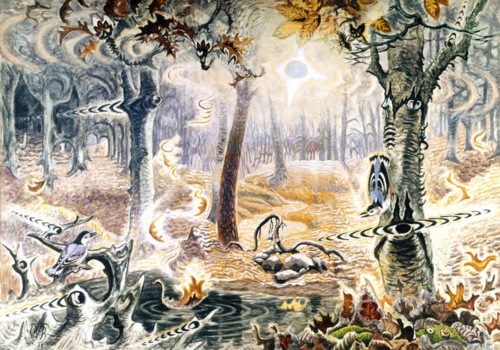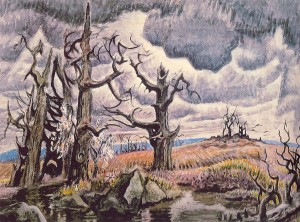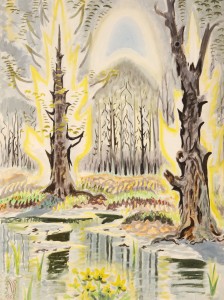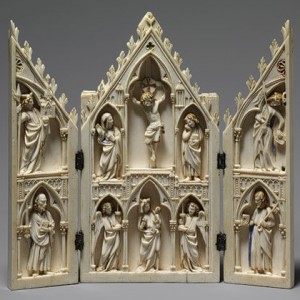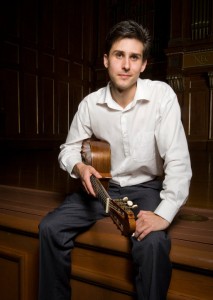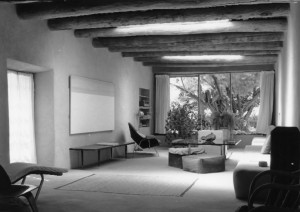I’m currently on my first road trip shooting footage for Beyond the Notes (see this post for a description of the project). The primary purpose of this trip is to collect material for online videos about American painter Charles Burchfield (1893-1967), the artist who inspired my wind quintet, Watercolors, and orchestral tone poem The Sphinx and the Milky Way. (See this post for more about my interest in Burchfield, and the paintings that inspired Watercolors.)
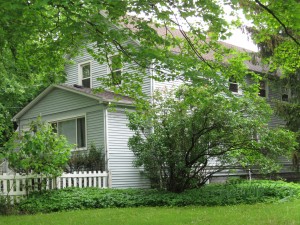
My pursuit of all things Burchfield has taken me to Buffalo, NY and surroundings, where the painter spent much of his life. Yesterday I visited the Charles E. Burchfield Nature & Art Center in Gardenville, a community center and park on Buffalo creek. There I caught a glimpse of his former home and studio where he lived and painted from 1925 to his death in 1967 (a private home across the street from the park), and filmed and photographed woods and flowers that evoked some of the nature scenes in Burchfield’s paintings.
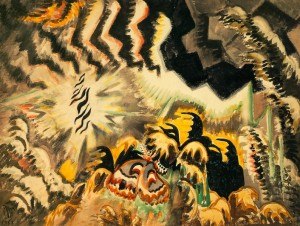
I continued onto the Burchfield Penney Art Center in Buffalo to visit the stimulating exhibit Sensory Crossovers: Synesthesia in American Art, which “provides an unprecedented opportunity to consider synesthesia through the work of some of the 20th century’s most significant artists, luminaries such as Charles E. Burchfield, Arthur Dove, Max Weber, Joseph Stella, Georgia O’Keeffe and Adolph Gottlieb.” (source) It was intriguing to see diverse works from both Modernists and later artists that dealt with the translation of music and sound into visual art. The exhibit features a number of wonderful works by Burchfield (including the bold The Moth and the Thunderclap); excerpts from his sketchbooks on display document a language of abstract forms and symbols, through which he sought to express the music of Sibelius and Wagner.
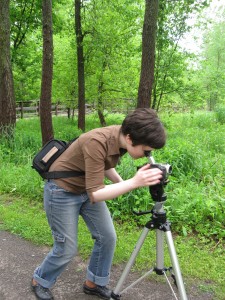
After taking in the exhibit, I had the pleasure of filming an interview with Nancy Weekly, longtime head curator at the Burchfield Penney Art Center, co-curator of Sensory Crossovers, and author and editor of a number of essays and books on his work. (I recently enjoyed this book by Weekly.) She was wonderfully generous with her time and expertise, and spoke with me on a number of topics relating to Burchfield’s work, including the importance of music in his paintings; and the phenomenon of synesthesia in art.
With this informative interview, I am hopeful that Beyond the Notes will become a valuable and entertaining resource for anyone interested in exploring Burchfield’s art, especially visitors who may not have the motivation to seek out books on the topic.
Tomorrow takes me to The Thomas Cole National Historic Site in Catskill, NY, where I’ll be shifting my focus back into the 19th century and the monumental landscapes of the Hudson River School.


